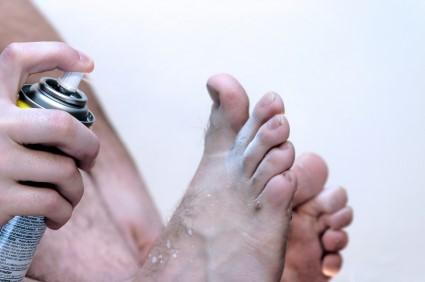
Athlete’s foot is considered to be a fungal infection that is typically present in between the toes but may spread to other parts of the body if left untreated. Most cases of athlete’s foot may be treated with the use of over-the-counter sprays or creams. However, some patients have found that they develop this condition more than once, and continuously have tried to get rid of athlete’s foot, but it continues to come back. To help avoid getting athlete’s foot, it’s suggested that you are using the appropriate footwear in public places, such as swimming pools, locker rooms, and communal showers. If you find that you are taking the proper precautionary measures, and are still getting athlete’s foot, please consult with a podiatrist who can help treat your condition, as well as give you professional tips on how to avoid it’s development in the future.
Athlete’s Foot
Athlete’s foot is often an uncomfortable condition to experience. Thankfully, podiatrists specialize in treating athlete’s foot and offer the best treatment options. If you have any questions about athlete’s foot, consult with Dr. LeKeisha George from Forest Hills Podiatric Medical Care. Dr. George will assess your condition and provide you with quality treatment.
What Is Athlete’s Foot?
Tinea pedis, more commonly known as athlete’s foot, is a non-serious and common fungal infection of the foot. Athlete’s foot is contagious and can be contracted by touching someone who has it or infected surfaces. The most common places contaminated by it are public showers, locker rooms, and swimming pools. Once contracted, it grows on feet that are left inside moist, dark, and warm shoes and socks.
Prevention
The most effective ways to prevent athlete’s foot include:
- Thoroughly washing and drying feet
- Avoid going barefoot in locker rooms and public showers
- Using shower shoes in public showers
- Wearing socks that allow the feet to breathe
- Changing socks and shoes frequently if you sweat a lot
Symptoms
Athlete’s foot initially occurs as a rash between the toes. However, if left undiagnosed, it can spread to the sides and bottom of the feet, toenails, and if touched by hand, the hands themselves. Symptoms include:
- Redness
- Burning
- Itching
- Scaly and peeling skin
Diagnosis and Treatment
Diagnosis is quick and easy. Skin samples will be taken and either viewed under a microscope or sent to a lab for testing. Sometimes, a podiatrist can diagnose it based on simply looking at it. Once confirmed, treatment options include oral and topical antifungal medications.
If you have any questions, please feel free to contact our offices located in Forest Hills, NY. We offer the newest diagnostic and treatment technologies for all your foot care needs.
Read more about athlete’s foot